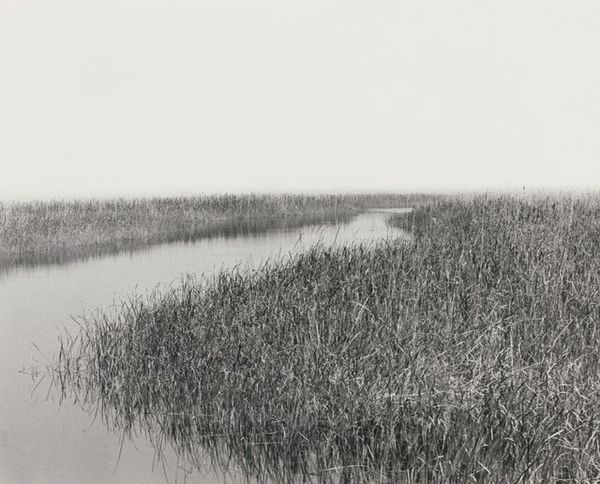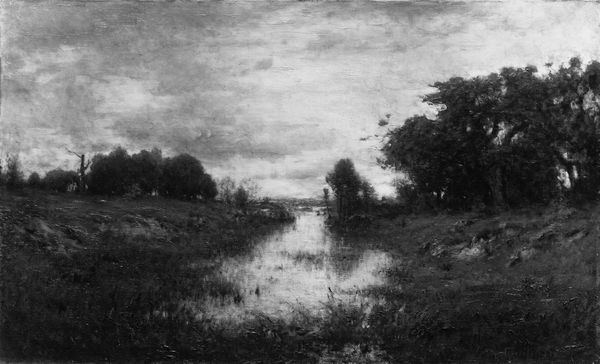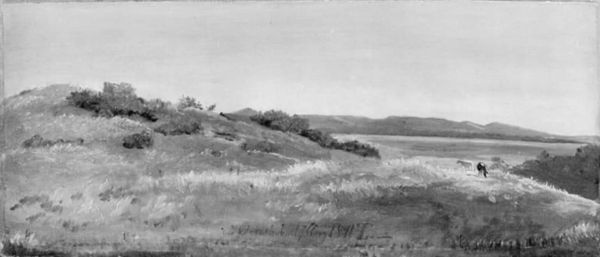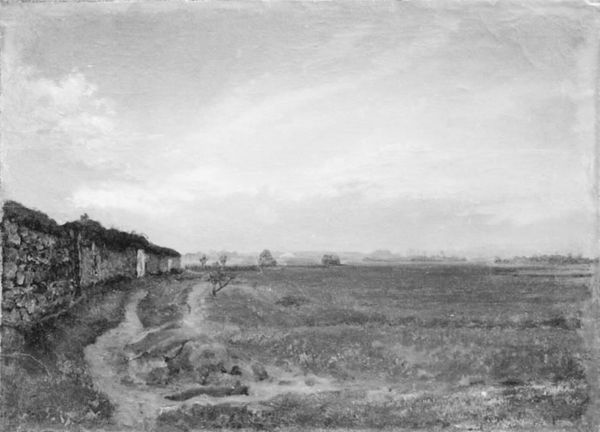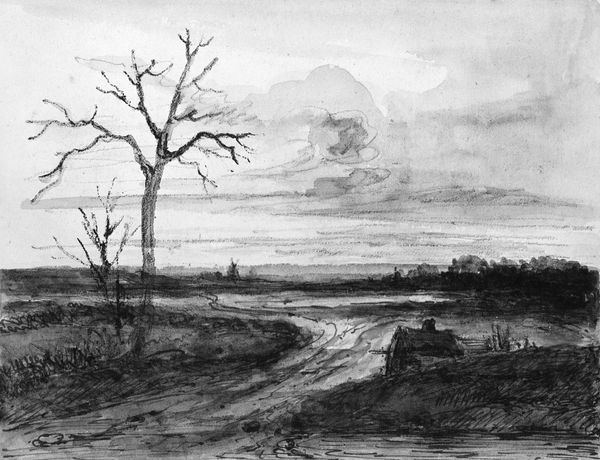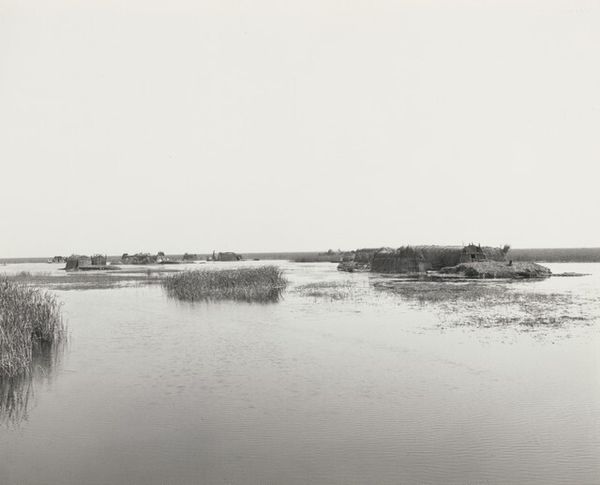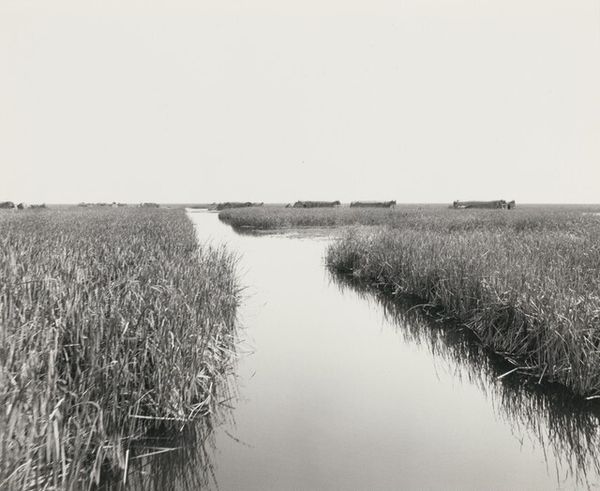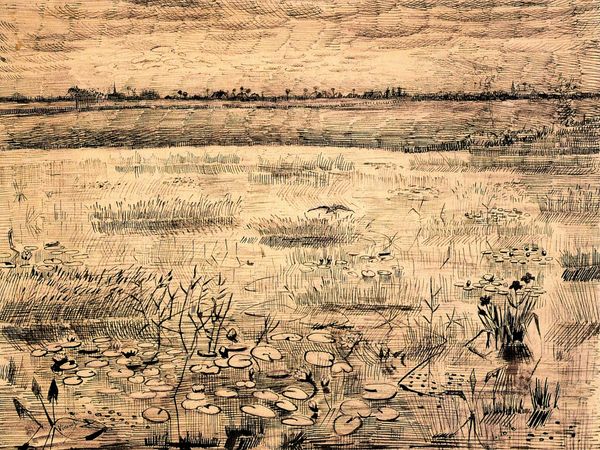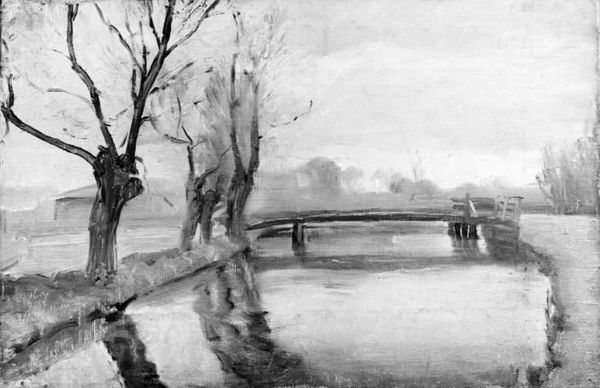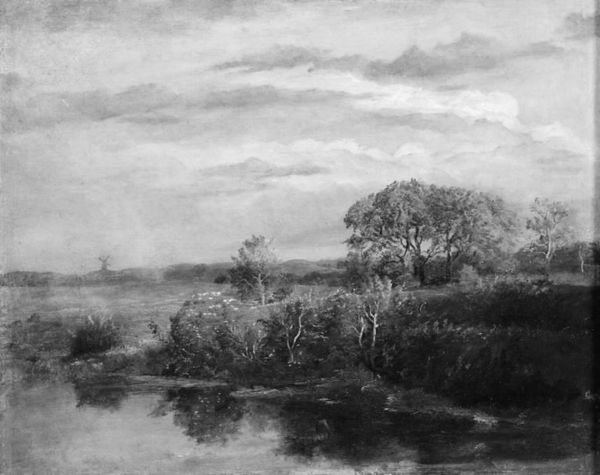
painting, plein-air
#
painting
#
plein-air
#
landscape
#
monochrome photography
#
monochrome
#
realism
#
monochrome
Dimensions: 8 1/2 x 14 3/4 in. (21.6 x 37.5 cm)
Copyright: Public Domain
Editor: Here we have Milne Ramsey's "Marsh Grass," painted in 1907. It's a grayscale painting, and honestly, it kind of feels bleak. What strikes me most is how it depicts this vast, almost industrial landscape, despite its natural subject matter. How do you interpret this work? Curator: What's fascinating here is thinking about "plein-air" painting in 1907. What kind of labor goes into creating a piece like this *in situ*? Consider the materials: canvas, paints, easel – all objects produced through complex systems of resource extraction, manufacturing, and distribution. What's Ramsey attempting to capture, and at what cost? Is it "nature," or is it the *idea* of nature, commodified through the artistic process? Editor: That's interesting, I hadn’t thought about the 'commodification of nature' aspect. Is he critiquing industrialization then, by framing this supposedly untouched space as another product of it? Curator: Perhaps. Or is he participating in the myth of pristine nature, obscuring the realities of labor and resource consumption that enabled the painting's very existence? Also, this area might look serene, but its materials contribute to construction: are there possible exploitative aspects connected to Ramsey's artmaking here? Editor: It's interesting to consider how even seemingly straightforward landscape paintings can be embedded in such a complex web of material production and social relations. I’ll definitely be thinking about that going forward. Curator: Exactly. Examining the means of production allows us to understand art as more than just aesthetics, but as a product of specific social and economic conditions.
Comments
No comments
Be the first to comment and join the conversation on the ultimate creative platform.
